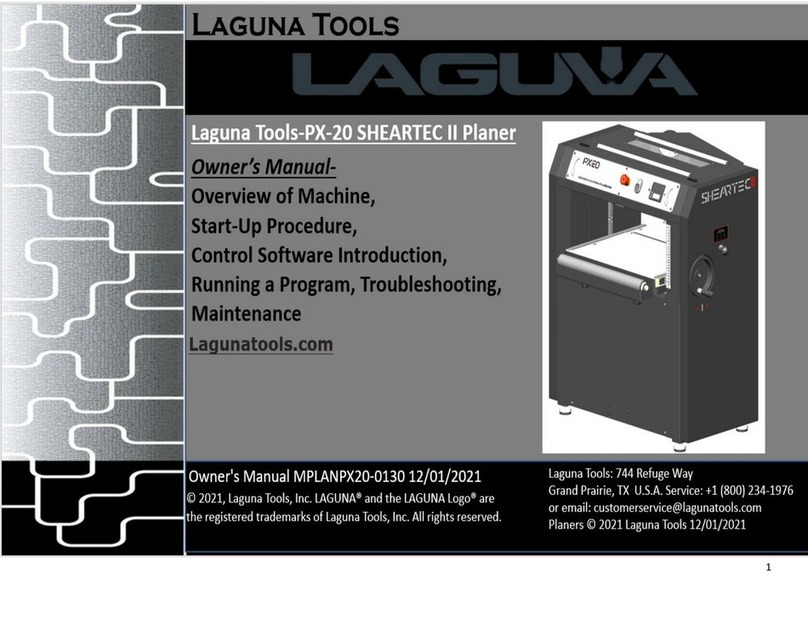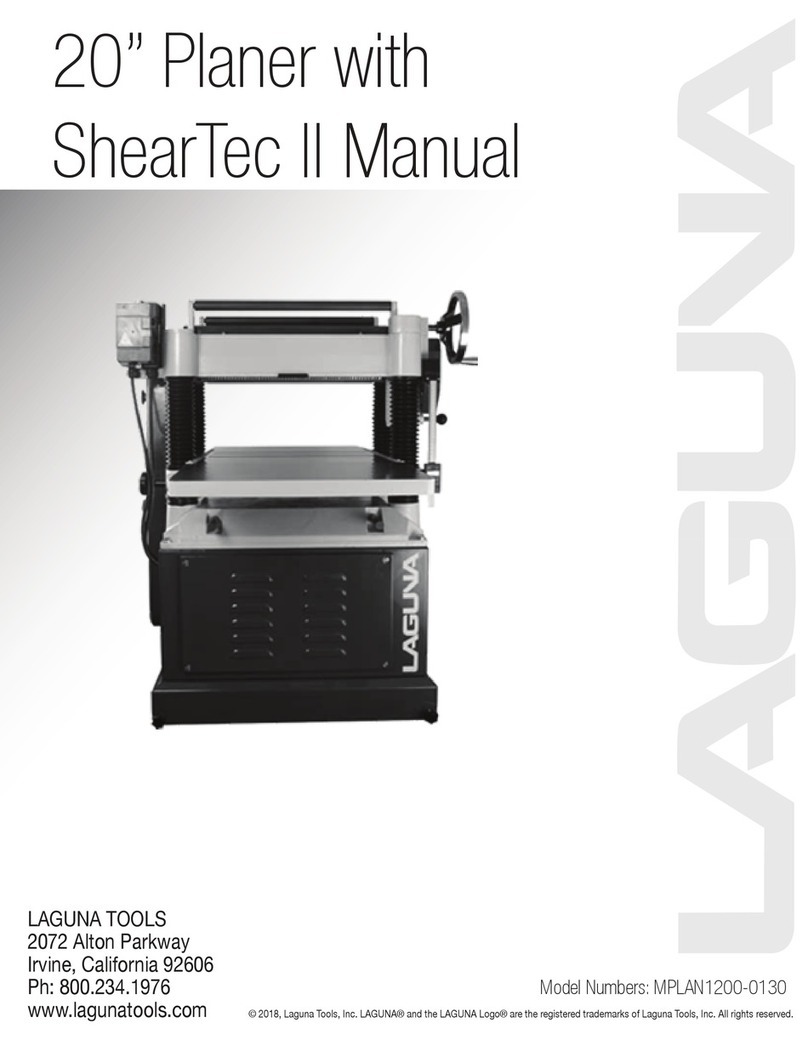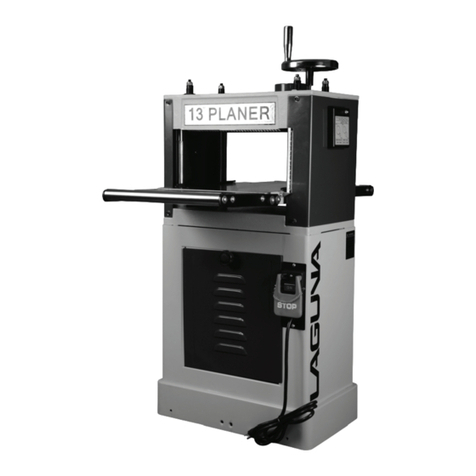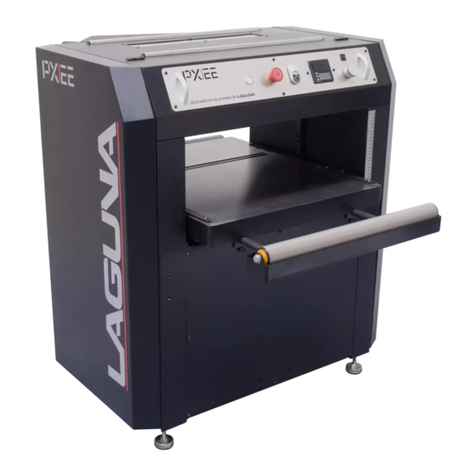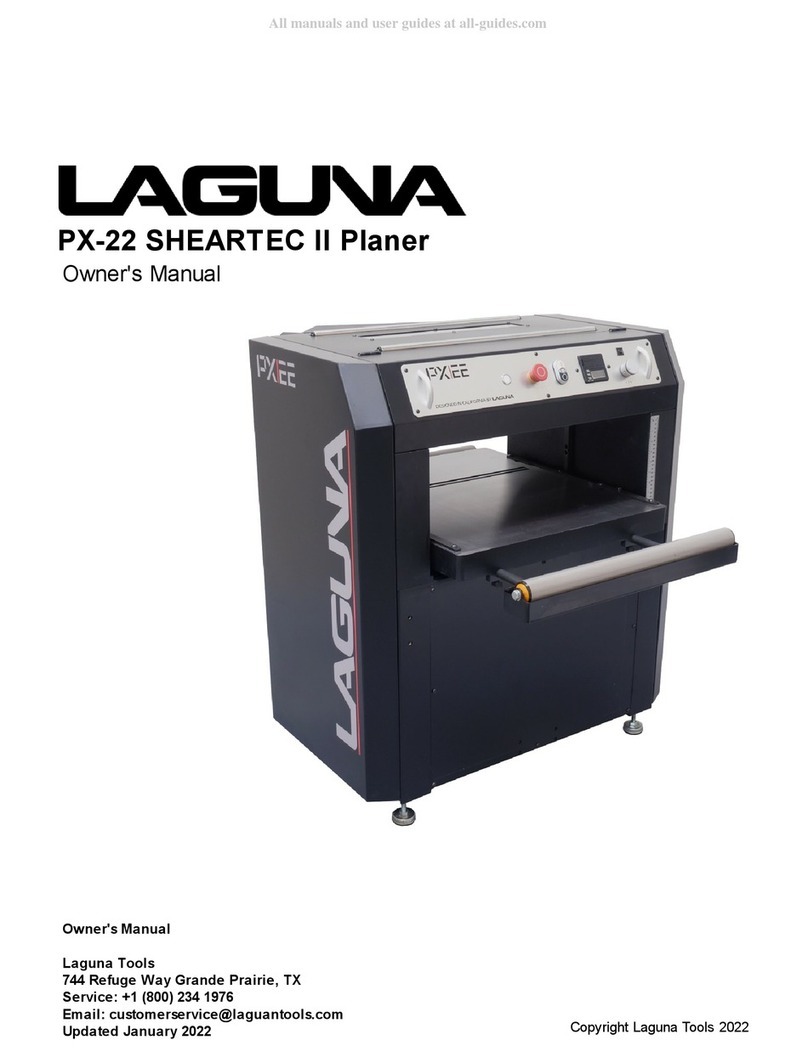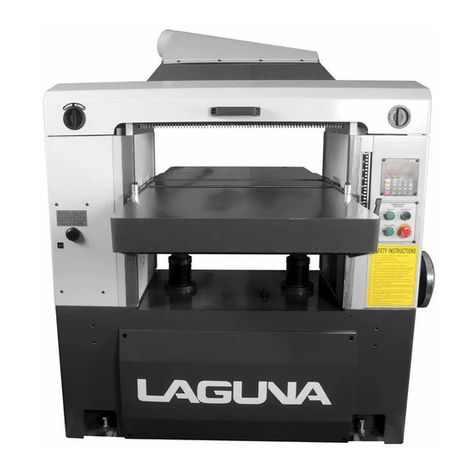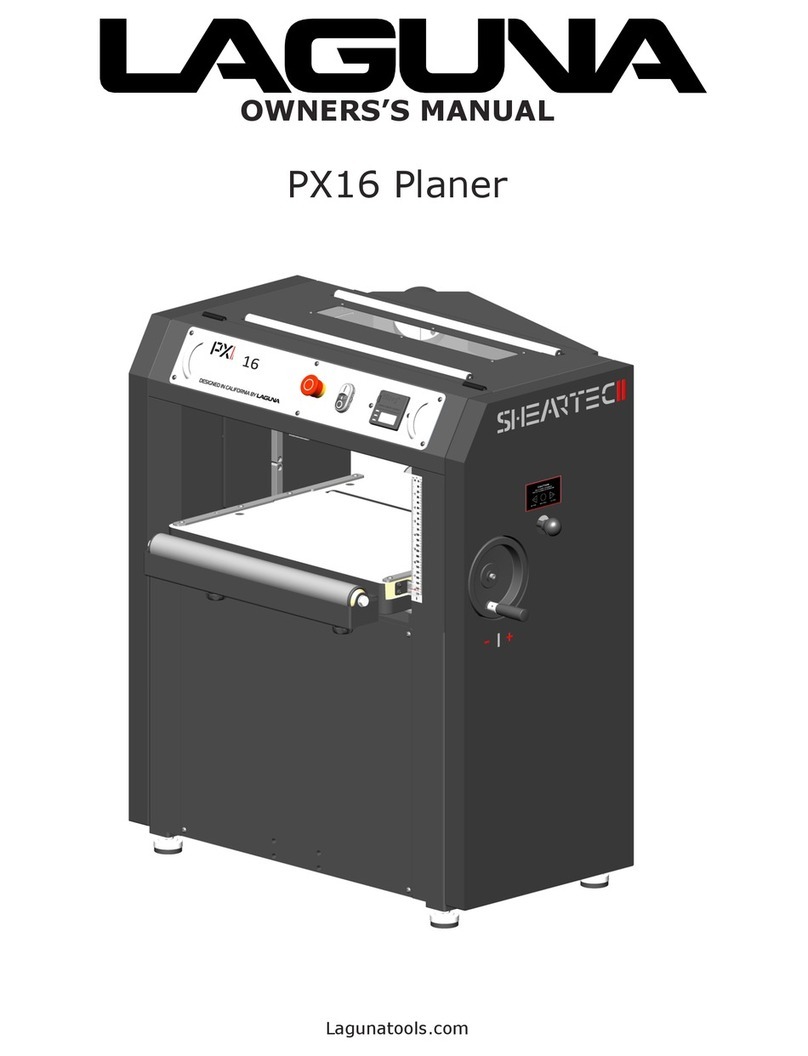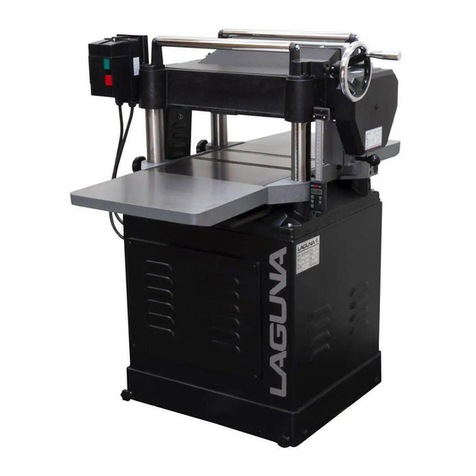
Limited Warranty
New woodworking machines sold by Laguna Tools carry a one-year warranty
from the date of shipping. Laguna Tools guarantees all new machines sold to be
free of manufacturers’ defective workmanship, parts, and materials.
We will repair or replace, without charge, any parts determined by Laguna
Tools, Inc. to be a manufacturer's defect. We require the defective item/part to
be returned to Laguna Tools. In the event the item/part is determined to be
damaged due to lack of maintenance, cleaning or misuse/abuse, the customer
will be responsible for the cost to replace the item/part, plus all related shipping
charges.
This limited warranty does not apply to natural disasters, acts of
terrorism, normal wear and tear, product failure due to lack of maintenance or
cleaning, damage caused by accident, neglect, lack of or inadequate dust
collection, misuse/abuse or damage caused when repair or alterations have
been made or attempted by others.
Laguna Tools, Inc. is not responsible for additional tools or modifications sold
or performed (other than from/by Laguna Tools, Inc.) on any Laguna Tools,
Inc. woodworking machine. Warranty may be voided upon the addition of such
noted tools and/or modifications, determined on a case-by-case basis.
Normal user alignment, adjustment, tuning and machine settings are not
covered by this warranty. It is the responsibility of the user to understand
basic woodworking machinery settings and procedures and to properly
maintain the equipment in accordance with the standards provided by the
manufacturer.
Parts, under warranty, are shipped at Laguna Tools, Inc's cost either by
common carrier, FedEx Ground service or similar method.
Technical support to install replacement parts is primarily provided by phone,
fax, or e-mail. The labour required to install replacement parts is the
responsibility of the user.
Laguna Tools is not responsible for damage or loss caused by a freight
company or other circumstances not in our control.
Only new machines sold to the original owner are covered by this warranty.
For warranty repair information, call 1-800-332-4094.
5
